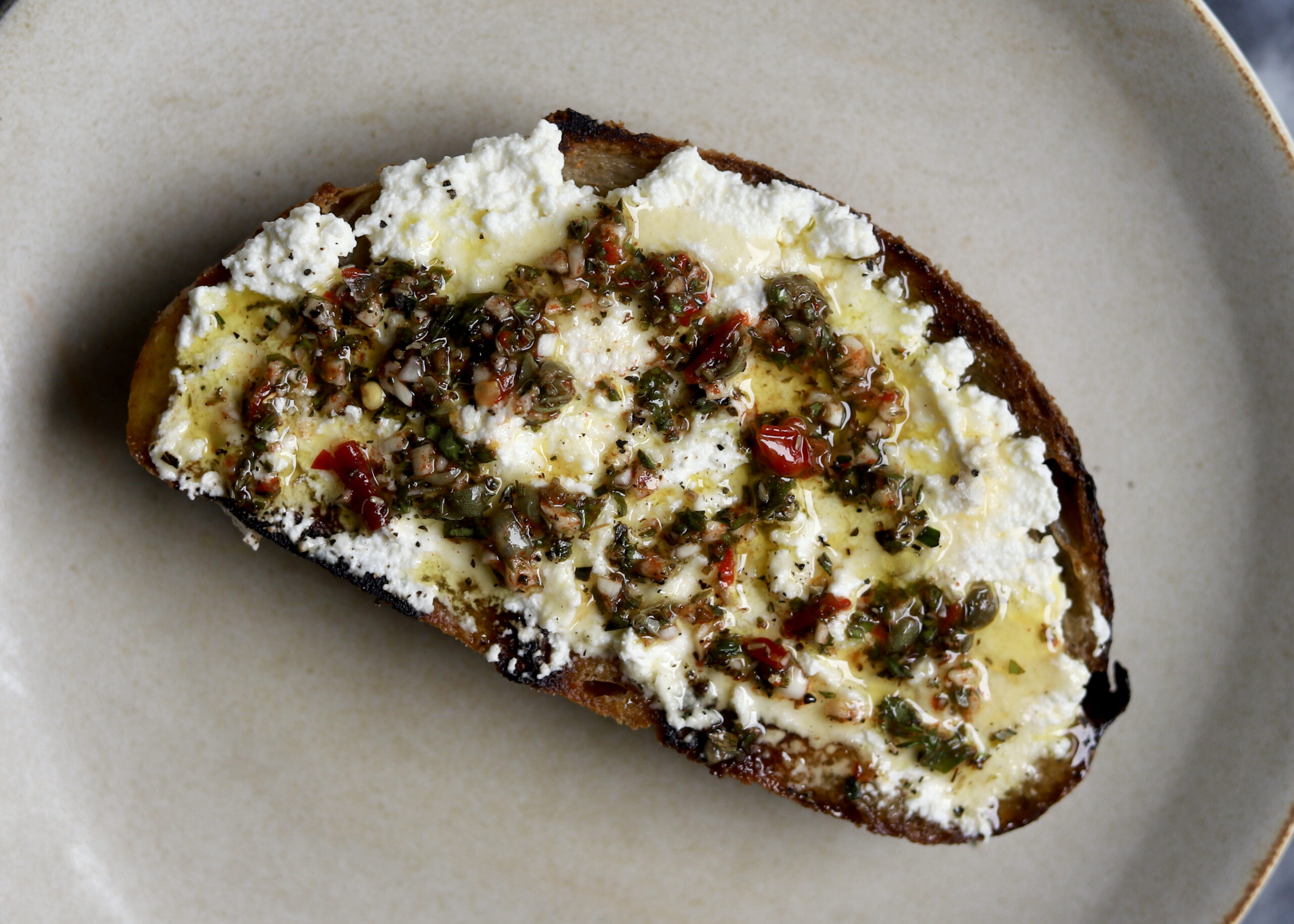Homemade Ricotta!
We are making a modified, homemade version of the traditional Italian whey cheese using delicious local Ontario milk and whipped cream – the perfect combo to make Ricotta. Ricotta is traditionally made from the leftover product, whey, from other cheese-making processes. Ricotta can be used as a savoury or sweet ingredient – whichever your heart desires! Once the milk and whipped cream is heated till it is about 190 degrees, a little bit of salt is added along with lemon or white vinegar – this step is important as an acidic ingredient is needed to cause the milk to curdle. Don’t forget to allow the curds to rest for about 20 minutes after the lemon or vinegar is fully incorporated.
You can make your ricotta more creamy by letting it drain for a shorter time and is best used for spreads or pasta. If you drain the past for longer, the drier ricotta can be used for fillings or in lasagnas. I initially wanted to make a whipped ricotta dip but seriously, making ricotta from scratch is a game changer when it comes to texture, and lightness and I found it was perfect as it is. I made a quick herb oil with rosemary, thyme, oregano, capers, garlic, pepperoncini, lemon zest, and juice to go with my ricotta slice. But truly, the ricotta toast possibilities are endless!

Ingredients
Method
- In a heavy bottom pot on low to medium heat add your milk and cream and let it come to a very light simmer, just before it boils. If you have a thermometer it should read 190 degrees fahrenheit. Make sure you mix your milk almost the entire time it is heating up so that it does not burn on the bottom.
- Add in your salt and mix well.
- Follow with your lemon juice. Add your lemon juice in a tablespoon at a time very (extremely) gently mixing the lemon juice in so it is fully incorporated.
- You want to stir until the lemon is incorporated but your milk will start to curdle and you want to keep your curdles nice and large. Remove from heat after adding your last tablespoon of lemon juice. Add 5 and if you feel like it hasn’t fully curdled, add the additional 1 tablespoon.
- You should see your milk start to curdle, it will be very obvious, there will be white clumps that form and a watery, yellowish liquid beneath (whey).
- Let your curdled mixed sit on the counter for about 20 minutes and in the meantime, prepare your cheesecloth and colander or sieve
- I like to use a large sturdy colander (you can also use a sieve) lined with about 2-3 layers of cheesecloth. Don’t use too much cheesecloth because it may take a very very long time to durian or even become waterlogged (and not drain).
- I place my cheesecloth lined colander over a large stock pot, a large mixing bowl will also work.
- Use a slotted spoon to remove the curds from the whey and place the wet curds into your prepared colander lined with cheesecloth.
- Try and fish out your curds from your whey as opposed to dumping the whole pot of curdled milk into a colander to drain.
- Let your ricotta sit and dry out for about 20 minutes for soft ricotta or up to an hour for very firm ricotta. This timing will depend entirely on how well the drainage is and how large your curdles are so use your judgement.
- Place prepared ricotta in an airtight container and enjoy! Keep in the fridge for up to 4 days but of course it is best eaten right away.
- In a bowl, mix all your ingredients together. Season with salt and black pepper to taste. Add more or less oil depending on desired usage. I like to keep mine a bit thicker, and use it similarly to chimichurri but you can add more oil and use it as an herb infused dipping oil.
- Top your sourdough with fresh ricotta, and drizzle with herb oil. Add a drizzle of honey to taste and additional salt and pepper if desired.

















